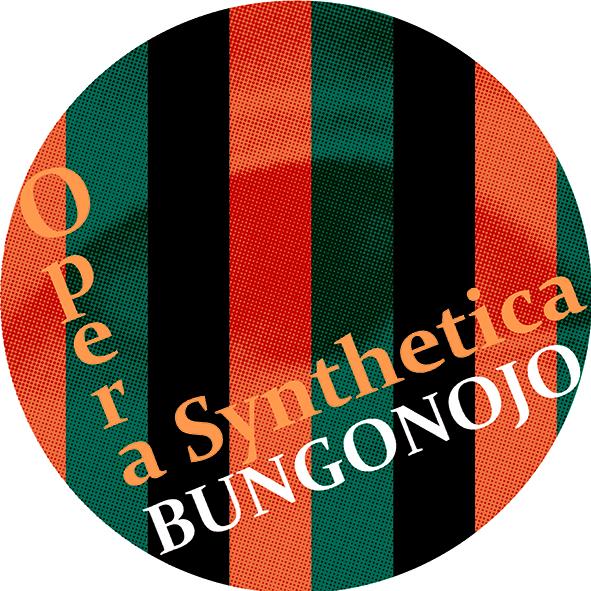Opera Synthetica "BUNGONOJO"
2014.10.09-2014.10.10
ACADEMIA
Date & Time:
Thursday, October 9, 2014 5:30 p.m.
Friday, October 10, 2014 5:30 p.m.
(expected to end at 7:30 p.m.)
The program is the same for both days.
Venue: Intermediatheque 2F Lecture Theatre ACADEMIA
Admission free (no reservation required)
Language: Japanese (no subtitles)
The number of seats limited to 48. We request your comprehension.
* Doors open at 5:15 p.m.
* Photographing, filming and recording are strictly prohibited.
* Please refrain from eating and drinking in the museum.
Opera Synthetica “BUNGONOJO”
At the Academia (Lecture Theatre) within the Intermediatheque, we will be staging a new opera.
Ten years have passed since I started working on this opera. The present staging is an experimental attempt to play orchestral music synthesized by means of a high quality software on several speakers (two pre-war gramophones, a stereo set from the Satoshi Yuze collection, and stereo speakers of the latest technology), all at the same time. The speakers from the Yuze collection are thought to be from the JBL Signature series made around 1960. Therefore, various types of sound quality from differing eras, from the pre-electrical age and the generalization of stereo recording to the contemporary era, are intermingled.
A word about the software synthesizer system. The method consists in recording every single note of every instrument in every possible situation (such as forte or piano, staccato or slur), and blending them delicately according to the motif of the music and the way of playing each instrument. This way, it is possible to synthesize a whole piece with a higher sense of reality.
Lately, with the remarkable development of software synthesizer technology, it is no exaggeration to state that live execution of background music has almost disappeared from commercials and television dramas. Nonetheless, there was no attempt to entirely synthesize a full-orchestra opera.
The present opera consists of two acts, and depicts the legends related to the life of the joruri narrator Miyakoji Bungonojo who achieved great success during the Kyoho era in the beginning of the 1700s, and the ban on joruri edicted by the shogunate.
Hirohisa Mori, Associate Professor, Intermediatheque Department + Associate Professor, International Research Center for Japanese Studies (Information Science)
Production, composition, staging: Hirohisa Mori
Scenario: Masayasu Komiya
Organizer: The University Museum, the University of Tokyo (UMUT)
【Program】
Start – 17:30
Act One – From Summer to Autumn (approximately 1 hour)
Prelude
Scene One – The Dressing Room
Scene Two – The Tea House
Scene Three – Please Do Not Approach Carelessly
Scene Four, Tableau One – Shundai
Tableau Two – Shundai Aria
Scene Five – The Joy of Creation
Scene Six, Tableau One – The Ichimura Theatre
Tableau Two – Dance “Tamatsubaki”
Tableau Three – After the Musical Performance
Interlude (20 minutes)
Act Two – From Winter to Spring (approximately 40 minutes)
Prelude
Scene One – Scene in the Magistrate's Office
Scene Two, Tableau One – View of the Nakamura Tea House
Tableau Two – Wakana Aria
Scene Three – The Parting
Scene Four, Tableau One – Lyrical Scene of Travelling
Tableau Two – Dance “Tamatsubaki”
【Technical Note】
Speakers:
Victrola Credenza VV8-30
Gramophone made by Isamu Hirabayashi
JBL signature stereo speaker
Amplifier: Stereo preamplifier model C-150
Power amplifier P-350
Azabu audio stereo speaker
TIMEDOMAIN stereo speaker
Composition system:
Finale 2011 (score notation)
MIDI Processor:
Finale 2011 Human Playback
Build 2.5.1.4. (MakeMusic Inc. Robert P.)
TIME VARIANT FUNCTIONAL PROCESSOR (TVFP)
Developed by Hirohisa Mori
Sequencer: LogicPro 9
Synthesizer: East West Quantum Leap Symphonic Orchestra and Chorus
Garritan ARIA Player (for shamisen parts)
DAC: MOTU UltraLite mk3
Computer: MacBookPro MacOSX 10.7
Format: 24bit 44.1kHz 8ch
Subtitles: Final Cut Studio 7

